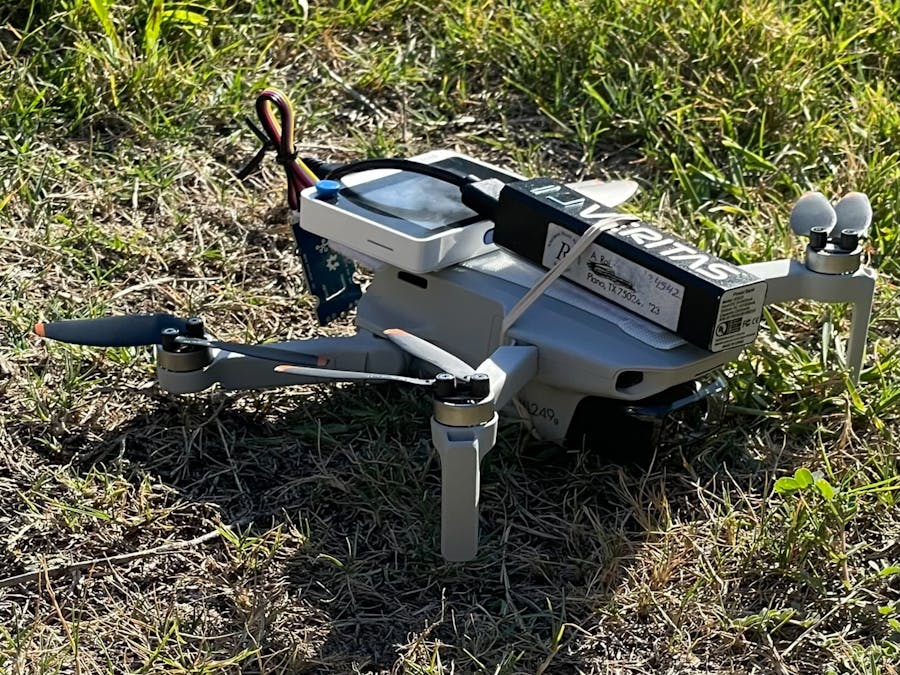This project was a proof of concept to see 1) how can a consumer drone be outfitted with sensors for possible scientific/field research, and 2) how can the SenseCAP K1100 Prototype Kit be used and mounted on a drone. Current drones exist for geographic research, often with build in sensors and are much larger in size. However, these can get costly to buy/develop and may not be as easy to access in all parts of the world. Thus, I wanted to see how sensors could potentially be mounted on a simple consumer drone for citizen science and field research.
I used the SenseCap K1100 kit, specifically the Wio Terminal, the Temperature/Humidity sensors, and the Air sensor, to get data from the world around. These sensors were attached on my DJI Mini 2 drone, a small and lightweight consumer drone. I also used my own battery pack to power the Wio Terminal. I attached these sensors and components with velcro, being careful to place them in a way that would not affect the center of mass.
Here are some snippets from my original design:
After testing this out, I actually almost lost my drone! Turns out, the way I added the battery pack messed with the DJI's built in sensors for flight control.
I reassembled the drone and sensors for the final design, adding in a rubber band for security:
You can see the CO2 sensor mounted at the back as well. Here's an example of flight:
I ran 2 versions of flights, since I could not get the terminal to read two external sensors at once. Here's an example of the data I got from the CO2 sensor:
How I would expand this project:
- On the hardware side; build a hard plastic mounting case to keep the sensors and battery; keeps the hardware safe from weather elements and poor piloting
- Use the AI Vision Sensor provided to mount on the drone and analyze land cover or other features in my area.













Comments
Please log in or sign up to comment.